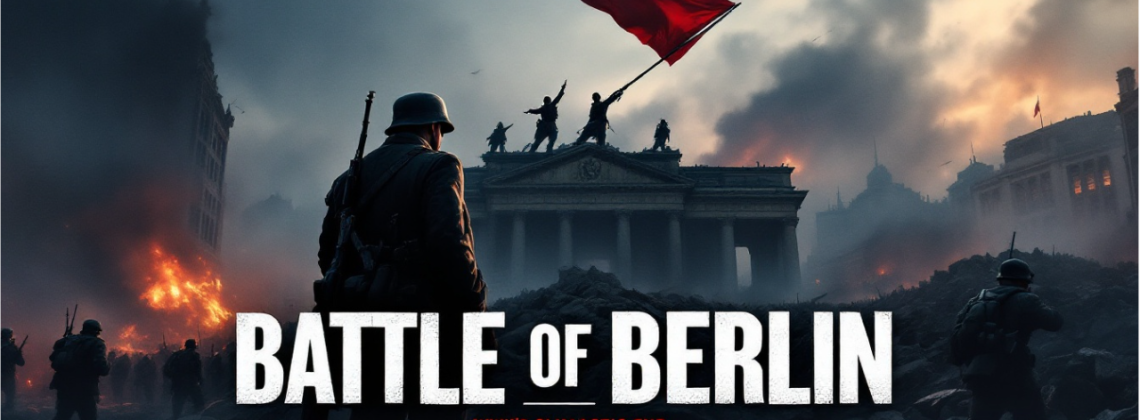
The year was 1945, and the world held its breath as the Second World War reached its dramatic conclusion. Among the countless battles fought during this global conflict, one stands out as both a historical turning point and a haunting testament to the human cost of war—the Battle of Berlin. This climactic confrontation not only marked the fall of the Third Reich but also reshaped the geopolitical landscape for generations to come.
The Final Stand: A City Under Siege
Berlin, once the hub of Nazi power, became a shattered stage for the war’s final act. By this point, the German forces were a shadow of their former might. Hitler, entrenched in his underground bunker, urged his troops—a mix of seasoned veterans, inexperienced conscripts, and even civilians—to fight to the bitter end. Propaganda painted an illusion of imminent victory, but the reality was grim: the Allied forces were closing in.
For the Soviet Union, Berlin represented more than just a strategic target. It was a chance to avenge years of devastation inflicted on their homeland. With relentless determination, the Soviet Red Army, under the command of General Georgy Zhukov, unleashed a massive offensive. Their goal was clear: the complete annihilation of the Nazi regime. The Red Army’s sheer numbers and ferocity overwhelmed the depleted German defenses, inching ever closer to the heart of the city.
A Brutal Struggle for Survival
The fighting in Berlin turned into one of the most brutal episodes of urban warfare in history. Street by street, block by block, Soviet and German forces engaged in relentless combat. Every building became a fortress, every ruin a potential death trap. Tanks clashed at point-blank range, while snipers hidden in bombed-out structures picked off their adversaries.
Even below ground, the battle raged on. The labyrinthine sewers of Berlin became battlegrounds of close-quarters combat—a claustrophobic nightmare of echoing gunfire and hand-to-hand fighting. Civilians, caught in the deadly crossfire, huddled in cellars and underground stations, gripped by fear and uncertainty as the city crumbled around them.
The Collapse of the Third Reich
Within the confines of the Führerbunker, Adolf Hitler’s delusions of victory persisted even as the Soviet artillery grew deafeningly close. Refusing to confront the reality of his defeat, he ultimately chose suicide over surrender, taking his wife, Eva Braun, with him. Their bodies were burned as chaos reigned above ground—a symbolic end to the dictator who had orchestrated unimaginable suffering.
On May 2, 1945, Berlin’s remaining German forces surrendered to the Soviets. The iconic image of the red banner hoisted above the Reichstag symbolized not just the triumph of the Allied forces but also the collapse of Nazi Germany. The streets of Berlin, once filled with life, lay eerily silent, marked by ruins, craters, and the heavy stench of death. The human cost of the battle—hundreds of thousands of lives lost—was staggering.
Aftermath: Lessons from the Ashes
The fall of Berlin was a turning point in history, marking the defeat of the Third Reich and the end of World War II in Europe. But the scars left behind would shape the world for decades. For Soviet soldiers, the victory was bittersweet—achieved at immense personal and national sacrifice. For Berliners, it meant an arduous journey of rebuilding and reconciliation.
Today, the battle serves as a stark reminder of the brutality of war. Memorials scattered across Berlin honor the millions who perished and stand as solemn warnings against the horrors of conflict. Yet, the city’s rebirth as a vibrant, reunified capital is also a testament to the resilience of the human spirit. Out of devastation emerged hope, cooperation, and a commitment to a more peaceful future.
Why the Battle of Berlin Still Resonates
The Battle of Berlin is more than a historical event—it is a narrative of courage, sacrifice, and the devastating impact of war. It offers powerful lessons about the importance of international cooperation and the need to strive for peace, even in times of immense conflict. The resilience displayed in the aftermath of the battle serves as an inspiration for overcoming adversity and rebuilding stronger communities.
History enthusiasts and those curious about the events that shaped our modern world can find valuable insights in this story. From the heroism of the individuals who fought to the city’s transformation, the lessons of Berlin in 1945 continue to echo through time.
